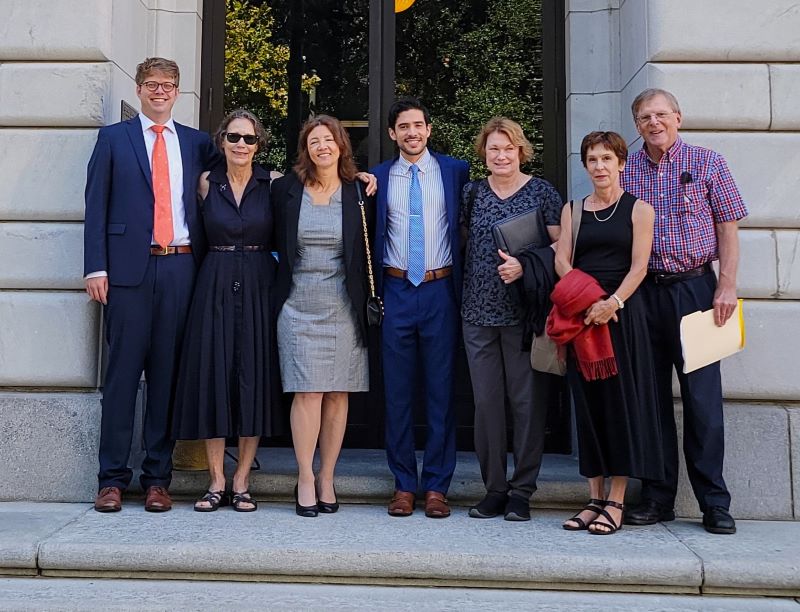Home / Environmental Law Clinic wins case to thoroughly vet wetlands project
Environmental Law Clinic wins case to thoroughly vet wetlands project
November 03, 2023 12:30 PM
|

The Tulane Environmental Law Clinic won an important U.S. 5th Circuit Court of Appeals ruling in October in a case that has spanned more than five years and involved almost a dozen students.
Argued over the summer by Clinic student-attorney and recent graduate Steven Moctezuma (L’23) under the supervision of Professors Lisa Jordan and Devin Lowell, the ruling in O'Reilly v. U.S. Army Corps of Engineers halts a 70-acre development in St. Tammany Parish and forces the U.S. Corps of Engineers to conduct a comprehensive environmental review, delving deeper into the cumulative impacts of the project.
“The Corps’ dismissive treatment of its role in protecting the human environment had serious, real-life impacts here in the form of repeated flooding caused by widespread destruction of wetlands that store floodwaters,” said Jordan, who is the Director of the Environmental Law Clinic. “It was essential that the courts step in and instruct the Corps on its legal responsibilities, and our clients are thankful that it has.”
Since 2018, the Clinic has represented Loretto O’Reilly and several environmental and good government groups over what is called the ''Timber Branch II” project, proposed for an area that is forested, and contains wetlands and flood hazard zones near the Tchefuncte and Timber Branch Rivers. The Corps had issued what the court called a “perfunctory” permit decision that would have allowed for the paving of more than 24 acres of wetlands on the site, with almost no comment or analysis. The Clinic filed suit against the Corps on behalf of its clients.
The Clinic, in court filings and arguments, said the Corps’ review had been little more than a process of “checking off boxes” without analysis or supporting information. Furthermore, the Clinic urged the court to consider that over the past five years in an area within three miles of the project in question there had been more than 80 similar projects.
The three-judge panel of the Fifth Circuit agreed, and in reversing an earlier court ruling noted that “an environmental assessment is intended to be a rough-cut, low-budget preliminary look at the environmental impact of a proposed project, but the Corps’ decision must still be reasonably supported.”
“Here the use of checkboxes without any comment or analysis is even less thorough and does not meet the level of scrutiny required,” the court’s ruling noted.
Moctezuma, who culminated his tenure as a student attorney with the argument before the appeals court this summer, said he appreciated the responsibility placed on him by his professors and supervisors.
"Getting the opportunity to argue on behalf of Tulane Environmental Law Clinic clients was my most memorable learning experience at Tulane Law,” said Moctezuma, who is now a Post-Bar Law Clerk at Wood Smith Henning & Berman LLP in Los Angeles. “Working with Lisa Jordan and Devin Lowell was invaluable because they allowed me to take on a significant role in the litigation, from the district court level to the appeal, supervising and teaching me how to be an effective advocate."
For the Clinic, the case has been instrumental in training students over the years who have learned to write public comments with evidentiary support, present written expert testimony, advocate in writing on behalf of their clients, and delve into the intricacies of the Clean Water Act and the intent of rules implementing the National Environmental Policy Act.
Among them are Henry Dahlen from the Class of 2019; Jacob Scheidt from the Class of 2021; Ryan Anderson, Aislyne Calianos, and Ellie Gardner from the Class of 2022; Charles Lally and Moctezuma, both from the Class of 2023; and William Veazey and Andrea Wright from the Class of 2024. A handful of student research assistants also worked on the case over summers, said Jordan.
The Clinic’s clients have long pushed for a comprehensive analysis of the cumulative impacts of projects like Timber Branch II in the area, as they’ve watched their properties increasingly flood from heavy rains as developers fill in surrounding wetlands with concrete.
“The court’s decision recognizing that Timber Branch II ‘is the very type of project that cumulative impact analysis is intended to address’ was a welcome validation of our clients’ persistent efforts,” said Jordan.